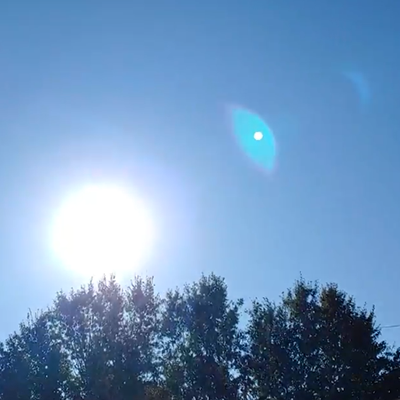A lens flare happens when light is scattered or flared in a lens system, often in response to a bright light, producing a sometimes undesirable artifact in the image. This happens through light scattered by the imaging mechanism itself, for example through internal reflection and forward scatter from material imperfections in the lens. Lenses with large numbers of elements such as zooms tend to have more lens flare, as they contain a relatively large number of interfaces at which internal scattering may occur. These mechanisms differ from the focused image generation mechanism, which depends on rays from the refraction of light from the subject itself.

Lens flares
There are many potential explanations for sightings. We recommend eliminating the most common and mundane before jumping to less probable conclusions or you submit a report.
Resources
Object Trackers
Live flight tracking maps are available for monitoring airline traffic and trajectories in real-time or historically around the world.
FlightAware
Flightradar24
ADS-B Exchange
Marine Traffic
Space Launches
Planned launches occur regularly all over the globe. These tracks can help identify the potential missions or launches in your area.
SpaceLaunchSchedule.com
SpaceFlightNow.com
RocketLaunch.Live
Satellite Trackers
Satellite tracking can also be done in real-time with the aid of tracking maps. They are also helpful for tracking Starlink launches.
Heavens Above
Space Weather
There are a number of sites which track solar flares, magnetic storms, and other events which are helpful for eliminating explanations related to astronomic phenomena.





